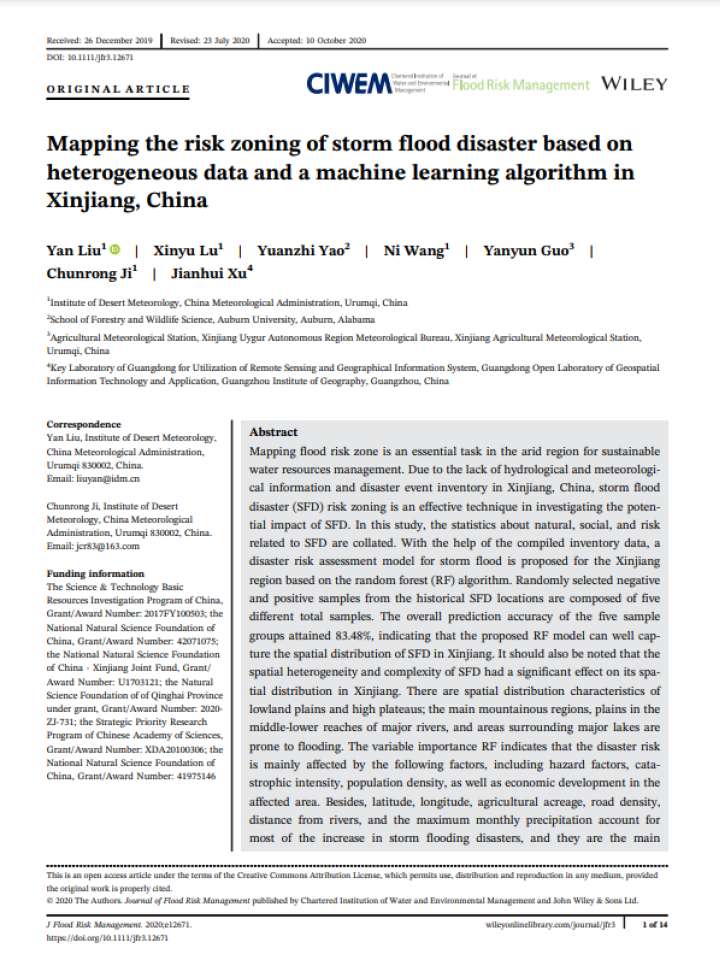Mapping the risk zoning of storm flood disaster based on heterogeneous data and a machine learning algorithm in Xinjiang, China
This study constructed a 1 km × 1 km rainstorm and flood disaster zoning map for Xinjiang, China. To do so, storm flood disaster (SFD) data of Xinjiang from 1984 to 2017 at the township level, as well as information on basic natural and social risk are collected collated. With the help of the compiled inventory data, a disaster risk assessment model for storm flood is proposed for the Xinjiang region based on the random forest (RF) algorithm.
Randomly selected negative and positive samples from the historical SFD locations are composed of five different total samples. The overall prediction accuracy of the five sample groups attained 83.48%, indicating that the proposed RF model can well capture the spatial distribution of SFD in Xinjiang. It should also be noted that the spatial heterogeneity and complexity of SFD had a significant effect on its spatial distribution in Xinjiang.
The proposed model provides some insight into the disaster in the mountainous region, and gives useful guidance for the national macro-control of flood prevention and disaster reduction
Results indicate that
- the disaster risk is mainly affected by the following factors, including hazard factors, catastrophic intensity, population density, as well as economic development in the affected area.
- Besides, latitude, longitude, agricultural acreage, road density, distance from rivers, and the maximum monthly precipitation account for most of the increase in storm flooding disasters, and they are the main triggering point for SFD in Xinjiang
Explore further
